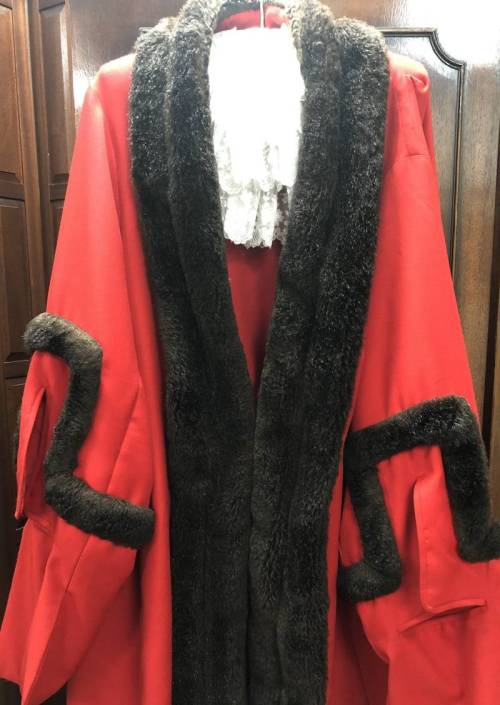Introduction on Mayoral Robes
Medieval society was very hierarchical. The sort of clothes you wore illustrated your position in society. Some early Mayors modelled their robes on those of the Merchant of Craft Guild they belonged to which was a further sign of status. The livery of the office spoke volumes about the Mayor's authority within the borough, but was also intended to rival the apparel worn by local noblemen. Heavy red robes trimmed with fur - usually squirrel - and black velvet was the costume of the well-to-do medieval man in Winter. In Summer, a lighter material, trimmed with silk, rather than fur was common. Some Mayors got carried away with their own importance and designed robes fit for the monarchy, inducing several kings to pass laws restricting the use of fur, velvet and so forth. Oliver Cromwell forbade the wearing of scarlet and other gowns during the period of the Commonwealth (1640-60) but after the monarchy was restored in 1660 the robes came out of the closet once more.
Just as judges today wear scarlet robes in criminal cases when they act for the monarchy, and violet ones in civil cases, so did the Mayor who was, for many years, also chief magistrate. Red for royalty and momentous events, violet or blue for more commonplace activities.
With the Reform Acts of the 1830s onwards came changes in costume. Public funds could no longer be used for fancy livery. Either the Mayor bought his own robes or relied on acts of individual or group benevolence. This is the time when the robes of office were no longer individually designed and owned but were passed on to new mayors as they took office and, according to several mayors, got smellier and smellier as time when on!
The JOBOT or lace collar historically worn over the robes is apparently an import from the French nobility.
